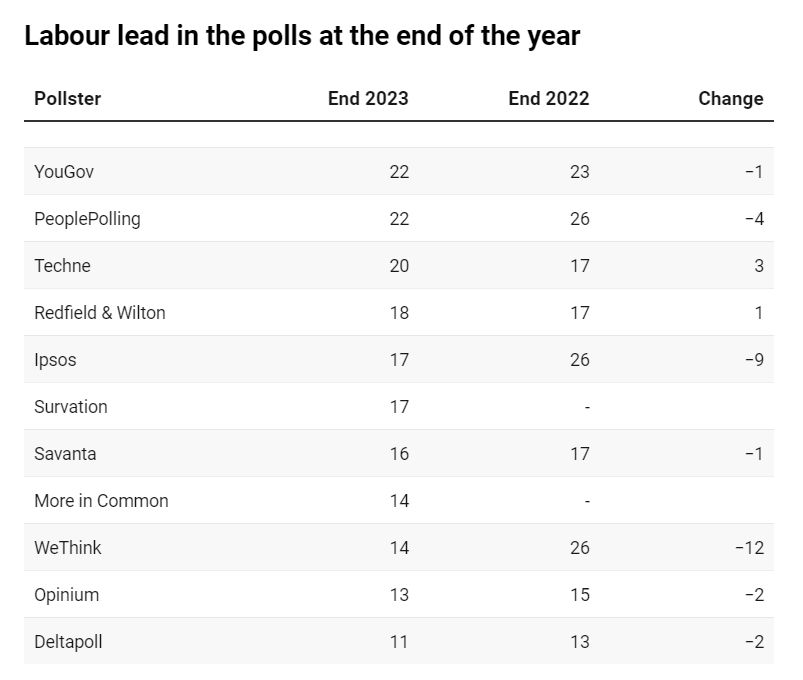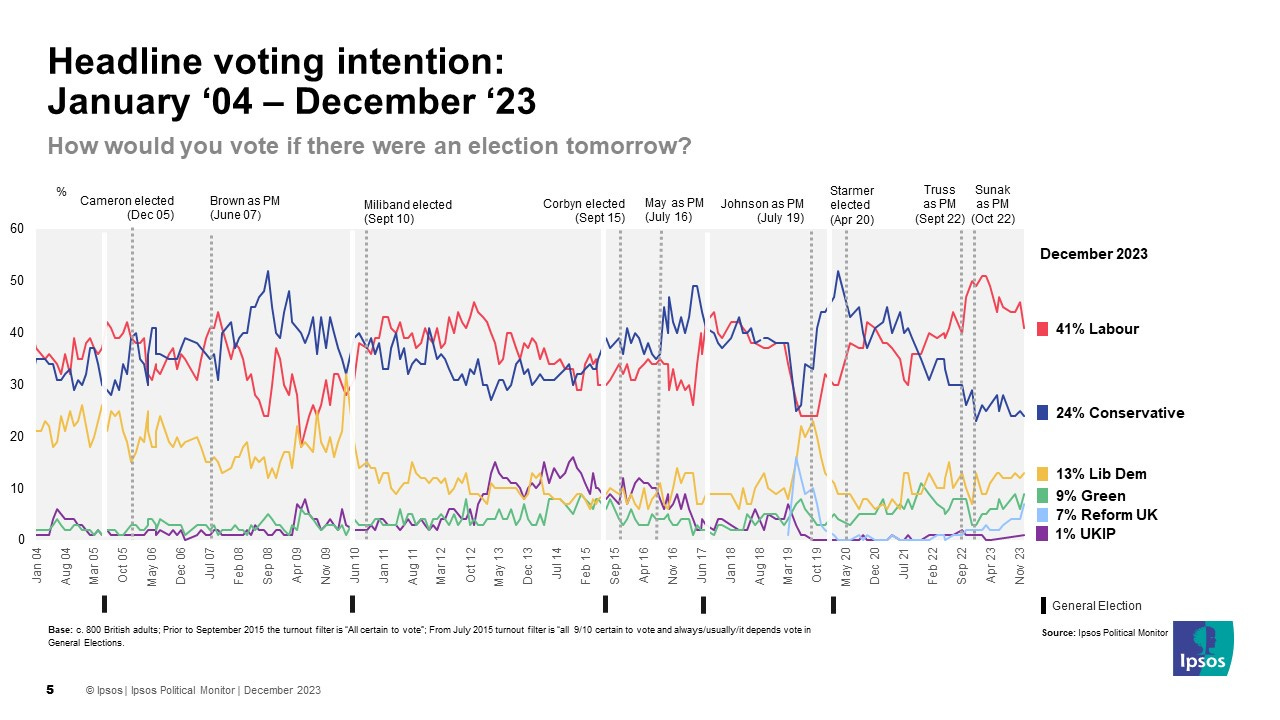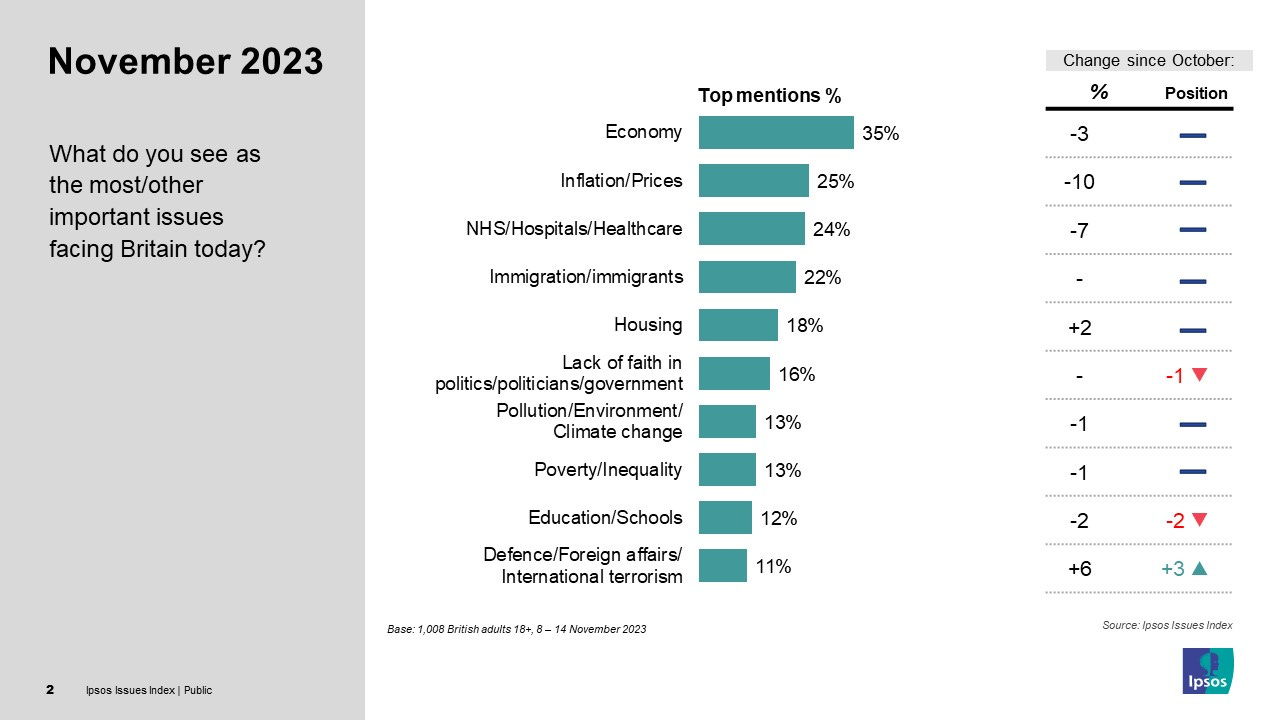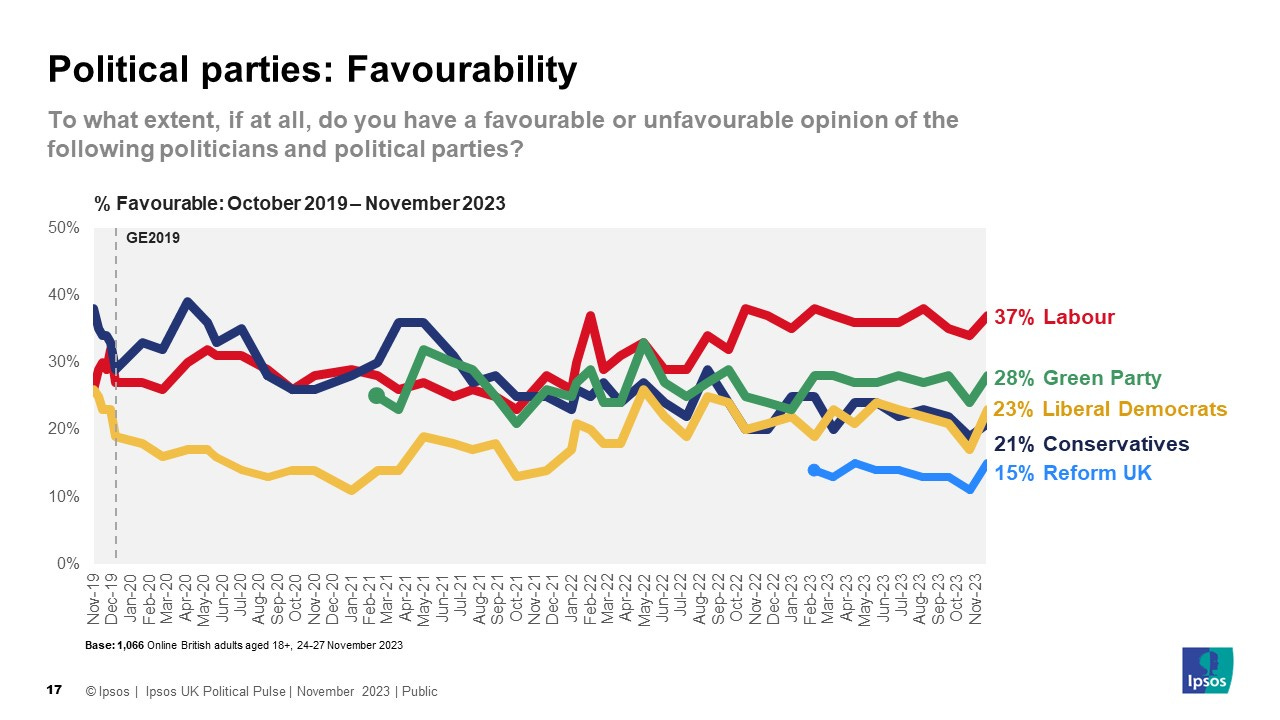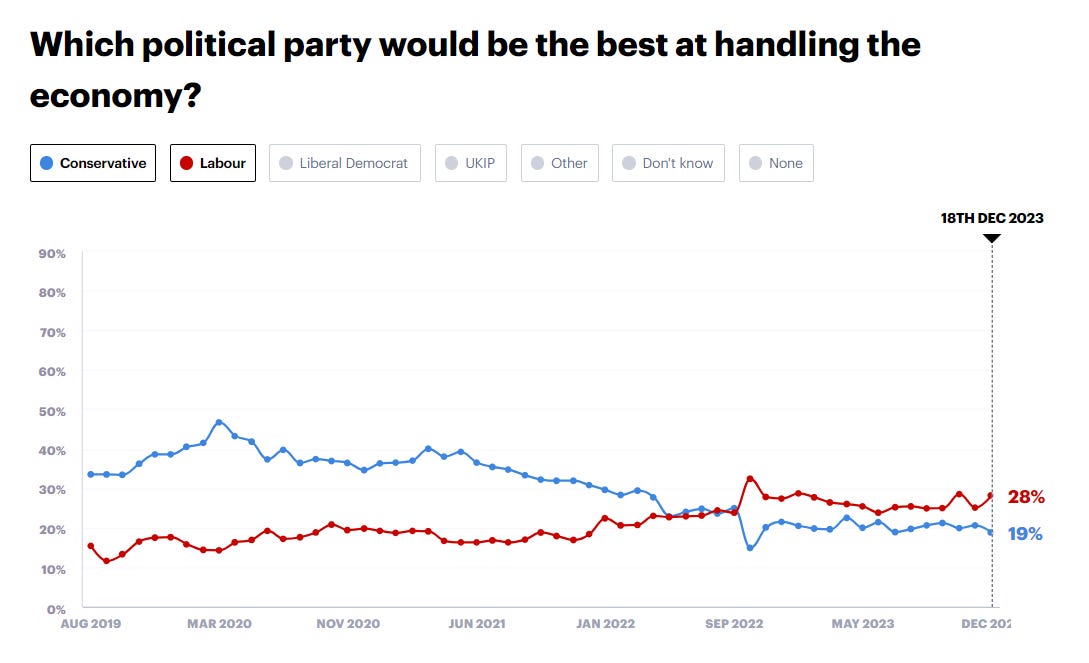Welcome to the 88th edition of The Week in Polls. As it’s the end of the year, a change from the usual format this time, with a summary of how the polls stand at the end of the year and how that varies from the start of the year.
As ever, if you have any feedback or questions prompted by what follows, or spotted some other recent polling you’d like to see covered, just hit reply. I personally read every response.
Many thanks to everyone who has been a reader for some, much or all of 2023. Readership has quadrupled through the year and, perhaps more importantly, the volume of interesting and thoughtful responses from readers continues to grow too.
Best wishes for 2024 and may your margins of error remain forever modest,
Mark
Been forwarded this email by someone else? Sign up to get your own copy here.
Already a reader and know others who might enjoy this newsletter? Refer a friend and you can get up to 6 months of free subscription to the paid-for version.
Want to know more about political polling? Get my book Polling UnPacked: the history, uses and abuses of political opinion polling.
The lead in the polls
Comparing the final figures from each pollster in a calendar year is a somewhat arbitrary yardstick but is has the twin advantage of simplicity and, at least this time, of matching more sophisticated averaging, smoothing and trend line plotting.
The picture is of Labour still well ahead in the polls. But (most probably) by a smaller margin than a year ago and with enough variation between different pollsters that if the polls narrow those variations may start really mattering. At the moment, they are all merely variations on how large Labour’s lead is:
Given the variations between pollsters and the uncertainties over the geographic variation in swing and levels of tactical voting, a hung Parliament is certainly possible rather than an outright Labour majority. The sort of hung Parliament, though, in which Starmer would still be Prime Minister. Something much more dramatic would have to occur in 2024 for that not to happen.
Voting intention trends
Here is the broader, long-term picture. Note the recent rise in Reform and also rises for both Lib Dems and Greens after previous dips.
But above all, note just how bad and long-running the Conservative slump is.
Top issues
Different pollsters have different ways of asking about what the top issues are for voters. Handily they produce similar results, but for longer-term trends I prefer Ipsos as their open ended question means they don’t risk getting caught out with option wording that made sense one year but sounds archaic a few years on.
Here’s how the final figures stand for 2023 (from November, as December is not yet out), and then the ones from 2022 for comparison:
Not much movement there, though note the rise in immigration from fifth to fourth, something I wrote about in more detail earlier in the month. Note though also the continuing absence, even with Ipsos’s open ended question wording, of war on woke and related concerns, and how Europe has in fact dropped out of the top ten.
Leadership ratings
The figures vary massively by question wording, so this is an area where it’s all the more important to stick with the one set of questions to divine trends. Having used Ipsos so far, let’s switch to YouGov for this one:
As you can see, at times it looked like Starmer’s figures might become exciting but they never quite did.
If those were the only figures we had, they’d look worrying for Labour. But we’ve got the previously mentioned big Labour leads. And we’ve got the leader ratings for the Prime Minister:
Down, down, deeper and down as both Status Quo and an Australian supermarket used to say.1
Party ratings
Back to Ipsos for this one:
It’s been a year of very little change, which when you’re in the hole that the Conservatives are in, is a loss for them: another 12 months gone by without recovering and the clock ticking down to the general election.
The economy
To round things off, let’s look at the issue that both dominates issue rankings and historically has had a massively influence on most general election results, the economy.
For this, it’s worth looking at a time period longer than one year to highlight just how unusual the apparently uneventful figures of the last year have been:
A small but consistent Labour lead on the economy both makes for an uneventful polling year but also, historically, a very unusual one.
So in summary…
There’s lots more of interest in the details of other polling and lots to say about the polling for other parties, all of which I’ll be returning to repeatedly in 2024.
But looking at the big, Labour versus Conservative, figures and trends, I reckon I’ll be writing a lot more next year about the Duke of Wellington yardstick (the worst ever Conservative election result).
Last week’s edition
Voodoo polling, Christmas polling and a correction to some polling.
My privacy policy and related legal information is available here. Links to purchase books online are usually affiliate links which pay a commission for each sale. Please note that if you are subscribed to other email lists of mine, unsubscribing from this list will not automatically remove you from the other lists. If you wish to be removed from all lists, simply hit reply and let me know.
Keep reading with a 7-day free trial
Subscribe to The Week in Polls to keep reading this post and get 7 days of free access to the full post archives.



